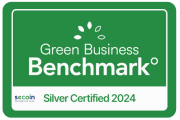Here are some common questions and answers. If you still have any other questions related to our products or services, please send your questions to contact(at)secoin.com. Thank you.
Secoin encaustic cement tiles are hand-made, aesthetic tiles with many colored patterns used for floor and wall coverings. Our tiles are made with two layers: The first layer (about 2-3mm thick) is a mixture of white cement, pigment, stone powder and additives which is hand-poured into divider mould to create desired patterned. The second layer is made of grey cement and sand to ensure the strength of tiles.
Encaustic terrazzo tiles are made as the combination of traditional encaustic cement tile and terrazzo tile. In encaustic terrazzo, small natural stone chips are used on the surface to create a special look. Other type of decorative chips, such as mother-of-pearl, glass chips,… can be used to enhance the beauty for tile products.
In encaustic terrazzo tiles, as there are decorative chips in the patterns, the lines of patterns are not as sharp and smooth as in encaustic cement tiles.
Another difference between encaustic terrazzo tiles and encaustic cement tiles is that encaustic terrazzo tiles have to go through grinding-polishing process which makes the decorative chips to be exposed on the surface.
Yes. Please be aware that cement tile is a handmade product. Cement tiles will not be identical from piece to piece. Slight variations such as size, shade, slight imperfections, irregular edges are inherent to this product and can vary from piece to piece. This adds to the natural appeal and does not compromise the performance. Secoin does not give warranty against shade variations.
No, the patterns are neither painted nor printed. Liquid colored materials (consisting of white cement, pigment, fillers, additives which are friendly to the environment) are hand-poured into divider molds to create these patterns. They are actually a layer of approx. 2-3mm. Therefore, the patterns will last very long and never go away. There are many ancient buildings in which cement tile floors have been existing for more than 100 years but still very beautiful. We have a short video on “How Cement Tiles are Made”, with an explanation and additional photographs.
Our standard thikcness for cement tiles is 1.6cm for most of sizes, tiles may be up to 2.0 – 2.5 cm thickness for size 30x30cm. However, we have thinner tiles for walling with 1.2cm thickness.
Secoin encaustic cement tiles are considered “green” products. They are manufactured from natural materials (cement, sand, stone powder, pigment) under hydraulic pressing process. Unlike ceramic or clay-burnt tiles, no heat is involved, so there is no consumption of fuel; no clay is used, so there is no consumption of agricultural land.
As a characteristic of cement tiles, our products do not have exactly the same thickness. There is certain allowed tolerance, which is about +/- 1mm for thickness of tiles.
Due to the tolereance, it is recommended to use mortar instead of glue when laying tiles so as to easily adjust tiles to a flat surface.
The white mark you see is efflorescence. Secoin Encaustic Cement Tile have very few problems with efflorescence as we are using a special environmentally friendly additive which has the function of reducing efflorescence. However efflorescence is an inherit problem for all cementitious products and does no harm to the products. It is a natural occurring phenomenon and cannot be totally controlled. If you see white marks on tile surface - that is efflorescence which will gradually go away.
Considerably reduced efflorescence is one of the outstanding features in Secoin encaustic cement tiles as compared to other similar products.
Terrazzo is a composite material made with marble, granite, glass, or quartz chips set into cement. Its roots start in Egyptian mosaics, but it became popular in 16th century Italy to make use of stone offcuts. It is either poured by hand or precast into blocks that get cut to size. Secoin Terrazzo is pre-cast terrazzo with pressing force of 800 tons, which helps increase the hardness and durability of the product.
Modern-day terrazzo that we use today began its story around 500 years ago in Venice, Italy. Venetian artisans of the time began to take the discarded chips from marble slabs and imbed them into concrete mixtures. They would then grind down the surface for their own terraces and other living spaces – hence the term, “terrazzo” – which is the Italian term for “terrace”.












